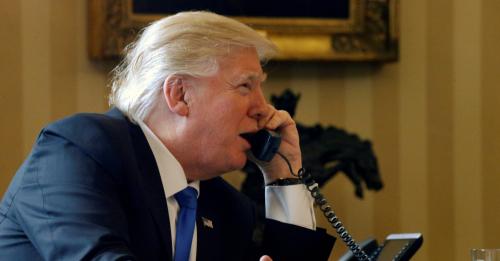During the course of the presidential campaign, Donald Trump said a number of things about nuclear weapons that gave the impression that he knows little about U.S. nuclear forces or the consequences of nuclear use. He confirmed that impression with a tweet sent this morning:
The United States must greatly strengthen and expand its nuclear capability until such time as the world comes to its senses regarding nukes
— Donald J. Trump (@realDonaldTrump) December 22, 2016
This could have been an ill-thought-out response to comments made earlier in the day by Russian President Vladimir Putin, who said that Moscow needed to enhance its nuclear potential—perhaps just a rhetorical tit-for-tat exchange. (Note to the Kremlin: get used to foreign policy by Twitter.)
But the tweet also raises a question: is Mr. Trump really so ignorant of the size and state of the powerful nuclear forces that he will control beginning on January 20?
U.S. strategic forces
As commander-in-chief, the president-elect will have sole authority to order the use of American nuclear weapons. They comprise an awesome force.
According to the latest data exchange mandated by the 2010 New Strategic Arms Reduction Treaty (New START), as of September 1 the United States had 1,367 deployed strategic nuclear warheads on 681 deployed submarine-launched ballistic missiles, intercontinental ballistic missiles, and heavy bombers. The vast bulk of these are warheads on ballistic missiles, which can be launched in a matter of minutes. The warheads have yields ranging from 100 to 455 kilotons (the bomb that devastated Hiroshima had a yield of just 14 kilotons).
In addition, the U.S. military has several thousand other nuclear warheads, making up a total stockpile of about 4,500. And that does not count another 2,000 to 2,500 weapons that have been retired and are in the dismantlement queue.
Some U.S. systems are aging. The Obama administration has put in place a modernization program that will address all three legs of the U.S. strategic triad. In the 2020s, the Pentagon plans to buy new ballistic missile submarines, intercontinental ballistic missiles, and bombers, all with the goal of maintaining strategic forces that will be safe, secure, and effective.
When it comes to nuclear weapons, Russia is America’s sole peer competitor. It is estimated to have about 4,500 total nuclear warheads. According to the latest New START data exchange, Russia on September 1 had 1,796 deployed warheads on 508 deployed missiles and bombers. No third country has more than 300 nuclear warheads.
The risk of expansion
It is not clear what Mr. Trump means when he says he wants to “expand” U.S. nuclear capability. As of February 2018, the United States and Russia will each be limited by New START to no more than 1,550 deployed strategic warheads on no more than 700 deployed strategic missiles and bombers. Current Pentagon plans call for U.S. strategic forces at precisely those levels.
Expanding U.S. nuclear capabilities thus could mean busting out of New START. That would have dangerous consequences. It would end the data exchanges, notifications, and inspections that the U.S. military prizes. They provide information on Russian nuclear forces that the Pentagon cannot get elsewhere. That lets the Defense Department avoid costly worst-case assumptions.
More importantly, breaking out of New START would reverse the trend of nuclear arms reductions that dates back three decades to the Reagan administration.
Russia is currently modernizing its nuclear forces (Russian and American systems age out on different schedules) and has hot production lines running for new submarines and missiles. The Kremlin thus could have a head-start in any new arms race.
[T]he real consequence of an arms race would be that the sides would, at great expense, pile up lots more nuclear weapons…and gain nothing in terms of improved security.
But the real consequence of an arms race would be that the sides would, at great expense, pile up lots more nuclear weapons…and gain nothing in terms of improved security. In fact, the result could well be diminished security. That’s what led Washington and Moscow in the 1960s to conclude that arms control made sense in the first place.
Moreover, if the United States and Russia launch a new nuclear arms race, what would they expect countries such as China, Pakistan, and North Korea to do? The world could become an even more complex and dangerous place.
A smarter approach
A smarter approach—and one that might appeal to the president-elect if he thinks it through—is to maintain New START and seek to do a deal on further nuclear arms cuts with Mr. Putin. That could lower the nuclear threat to the United States and improve relations with Moscow. It could also free up funds for the additional conventional forces, such as more warships, that Mr. Trump has said the Pentagon should buy.
What will the president-elect do? We will only find out for sure when he takes office and we see actual policies. But today’s tweet indicates that, when it comes to nuclear weapons, Mr. Trump faces a steep learning curve. He had better start doing his homework. This stuff matters.
The Brookings Institution is committed to quality, independence, and impact.
We are supported by a diverse array of funders. In line with our values and policies, each Brookings publication represents the sole views of its author(s).







Commentary
The Donald and nukes, again
December 22, 2016